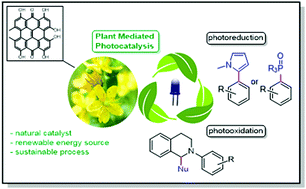2021/2/17 ドイツ連邦共和国・コンスタンツ大学

・ コンスタンツ大学が、ポリエチレンのようなプラスチックのよりサステナブルなケミカルリサイクル技術を開発。
・ プラスチックを直接再利用する機械的なリサイクルでは、プラスチックに含まれる汚染物質や添加剤により再生材料の特性が損なわれる。ケミカルリサイクルでは、化学的なプロセスでプラスチックを分子の構成要素に分解して新しいプラスチックに転換する。
・ しかし、最も多く利用されているポリエチレンのケミカルリサイクルでは、それを構成するポリマー鎖が極めて安定しているため、より小さな分子に分解するには 600℃超の高温度を要し、エネルギーを大量に消費する。また、出発原料の 10%を下回るケースもあり、回収率が限定的。
・ 新ケミカルリサイクル技術では、必要な温度が僅か約 120℃とエネルギー効率性が高く、出発原料の約 96%の回収が可能。分子レベルでの「破壊点」を利用してポリマーの長鎖をより小さな構成要素に分解する。
・ ポリエチレン鎖で予め決まっている破壊点の低密度を有するポリマーが鍵。これにより、回収した材料の結晶構造と特性が維持される。このタイプの材料は、3D プリンティングでの利用に最適。
・ 植物油ベースのプラスチックで新技術を実証。混合プラスチックを処理した結果、再生材料の特性は出発原料のそれと同等であった。
・ 本研究には、欧州研究会議(ERC Advanced Grant)が資金を提供した。
URL: https://www.uni-konstanz.de/en/university/news-and-media/current-announcements/news-in-detail/kunststoffe-nachhaltiger-recyceln/
<NEDO海外技術情報より>
(関連情報)
Nature 掲載論文(アブストラクトのみ:全文は有料)
Closed-loop recycling of polyethylene-like materials
URL: https://www.nature.com/articles/s41586-020-03149-9
Abstract
Plastics are key components of almost any technology today. Although their production consumes substantial feedstock resources, plastics are largely disposed of after their service life. In terms of a circular economy1,2,3,4,5,6,7,8, reuse of post-consumer sorted polymers (‘mechanical recycling’) is hampered by deterioration of materials performance9,10. Chemical recycling1,11 via depolymerization to monomer offers an alternative that retains high-performance properties. The linear hydrocarbon chains of polyethylene12 enable crystalline packing and provide excellent materials properties13. Their inert nature hinders chemical recycling, however, necessitating temperatures above 600 degrees Celsius and recovering ethylene with a yield of less than 10 per cent3,11,14. Here we show that renewable polycarbonates and polyesters with a low density of in-chain functional groups as break points in a polyethylene chain can be recycled chemically by solvolysis with a recovery rate of more than 96 per cent. At the same time, the break points do not disturb the crystalline polyethylene structure, and the desirable materials properties (like those of high-density polyethylene) are fully retained upon recycling. Processing can be performed by common injection moulding and the materials are well-suited for additive manufacturing, such as 3D printing. Selective removal from model polymer waste streams is possible. In our approach, the initial polymers result from polycondensation of long-chain building blocks, derived by state-of-the-art catalytic schemes from common plant oil feedstocks, or microalgae oils15. This allows closed-loop recycling of polyethylene-like materials.



